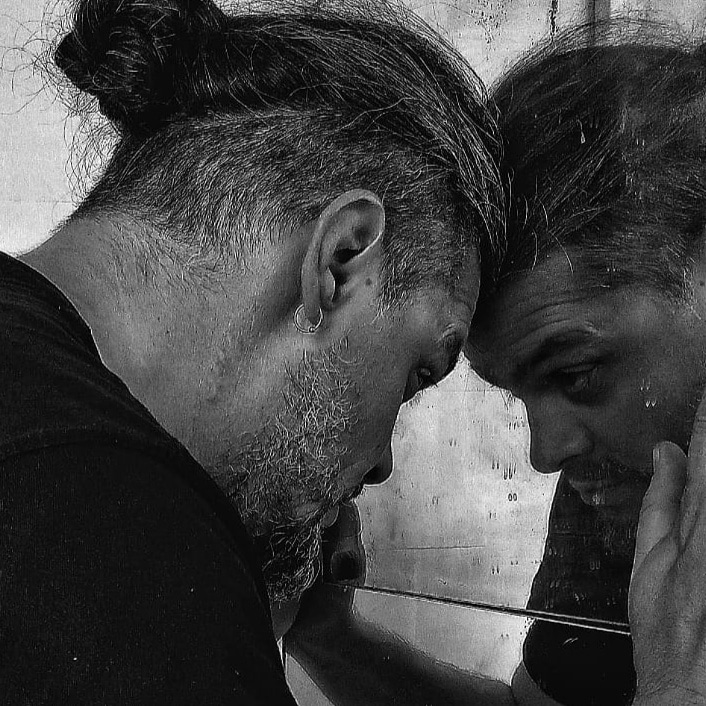A graduate of the Faculty of Arts in Iași, Gabriel Caloian is that artist who does not make out of his personal projects business cards proving his artistic potential, but who, through countless interventions in group or collective exhibitions, teaches you to easily spot him in relation to the thematic whole, through the lucid dissonant imprint he creates in relation to the contemporary experiences of the species.
Beings and objects, tools and body fragments, hybrids and halos, robots and fish, cages and signs, wheels and claws, jags, teeth, voivodes and astronauts, caterpillars, many tails and shadows… Among these, the artist does not ask questions, nor passively observe, but turns the galvanized surfaces to mirror his own immediate unreality. The real of appearance, the fantastic of substance, do not seem to fully define the world contained in the dystopian Wonderland narrated, often only in ink, by Gabriel Caloian.
As in a parade of visions, each element dislocates reality into hundreds of sequences, augments or parodies it, until the skeleton of thought, apparently chaotic, crystallises. The boundary between dream, waking and awakening arcs, alternating projections of the unconscious of surrealist origin (in fact explorations of the postmodern consciousness) vs. familiar poses and faces, making the viewer witness the narrative, partially aware of what he sees. This is not because the artist chooses ciphers to make it difficult to understand, nor as a result of interweaving and juxtaposition contrary to objective existence, but because the tableau itself tends to become more real than the original, personal reality.
In Gabriel Caloian both the random and the ludic emerge from the same impulse. The vitality of the line that seems to spring from a tiny, atomic point gives birth to this world and all forms, living by itself on the surface of the paper, regenerating itself through new and new explosions. There is always something happening no matter where the eye stops, something germinating or conflicting, something transforming or absorbing the void or the creatures, distilling them and propelling them into new mechanisms. The artist is not the great puppeteer who pulls the strings and allows the creatures to enter or leave the stage, but a receptacle whose vision, like a kaleidoscope, composes worlds. To see what happens in Gabriel Caloian’s world, the conceptual and technical dissection tools alone are not enough. You have to descend into the “basement of reality” (as Blecher saw it) so that gradually, by climbing the fish scales, you can release with your own key, what is yours in this universe. (Dr. Maria Bilașevschi)
